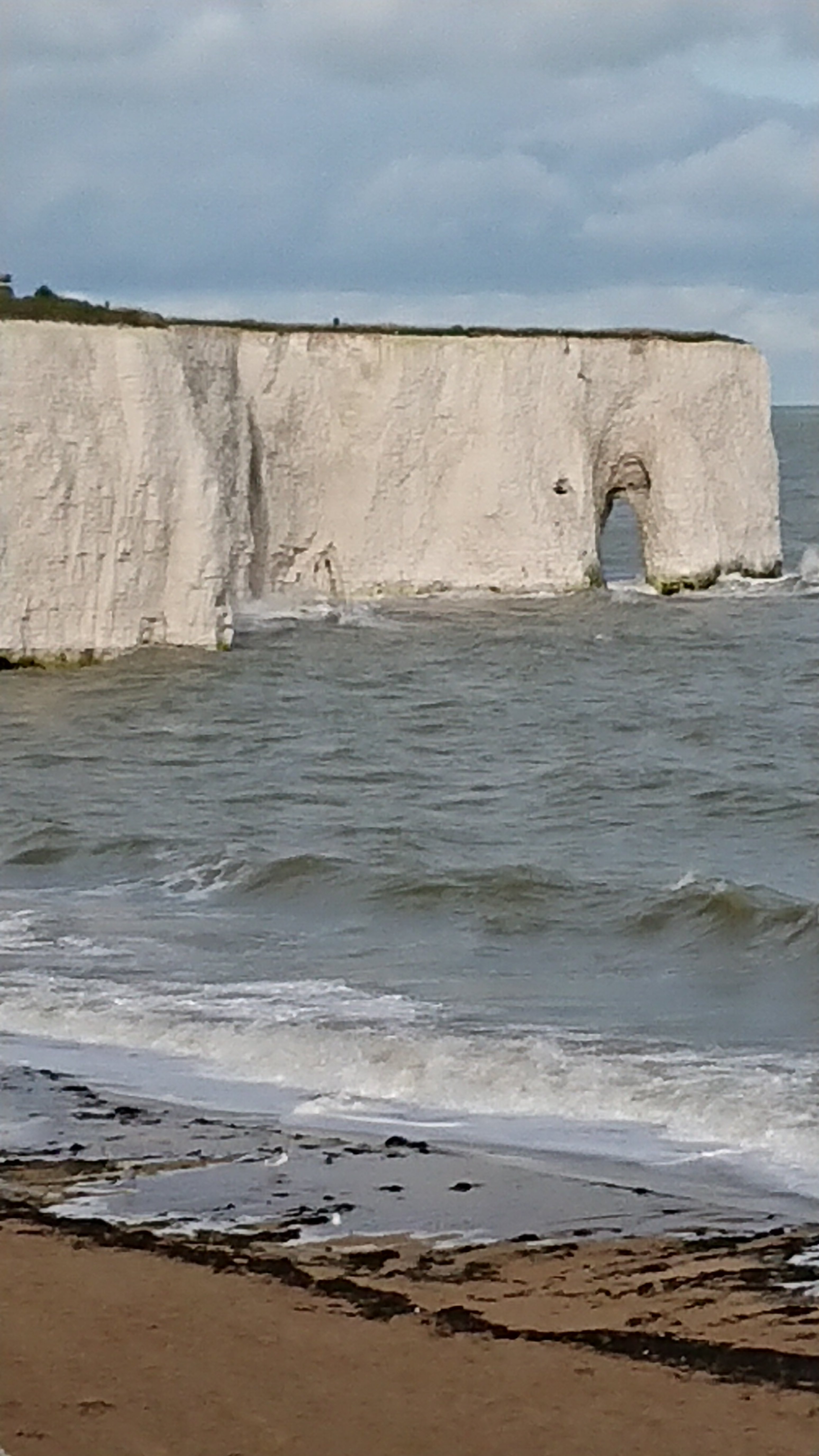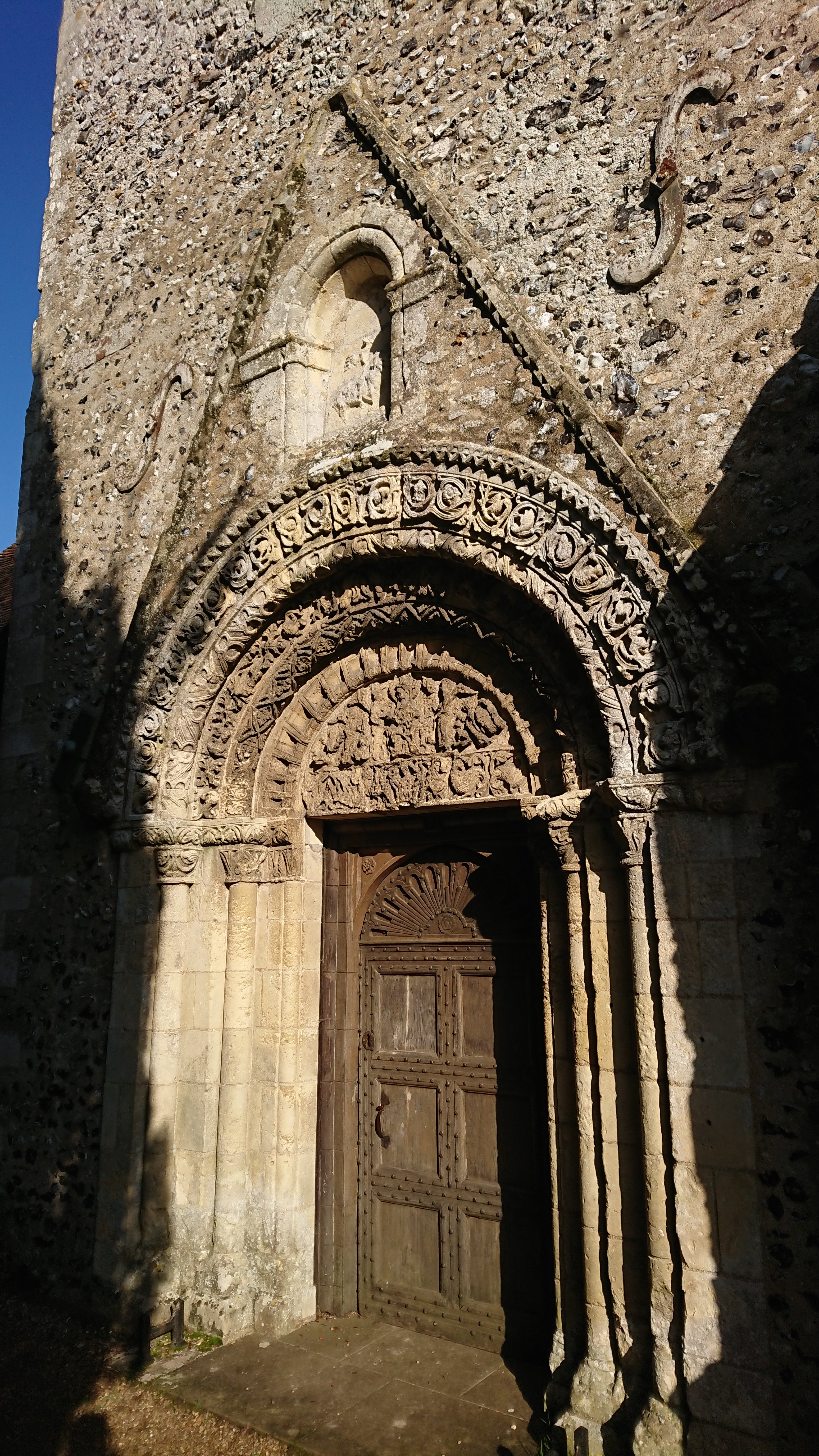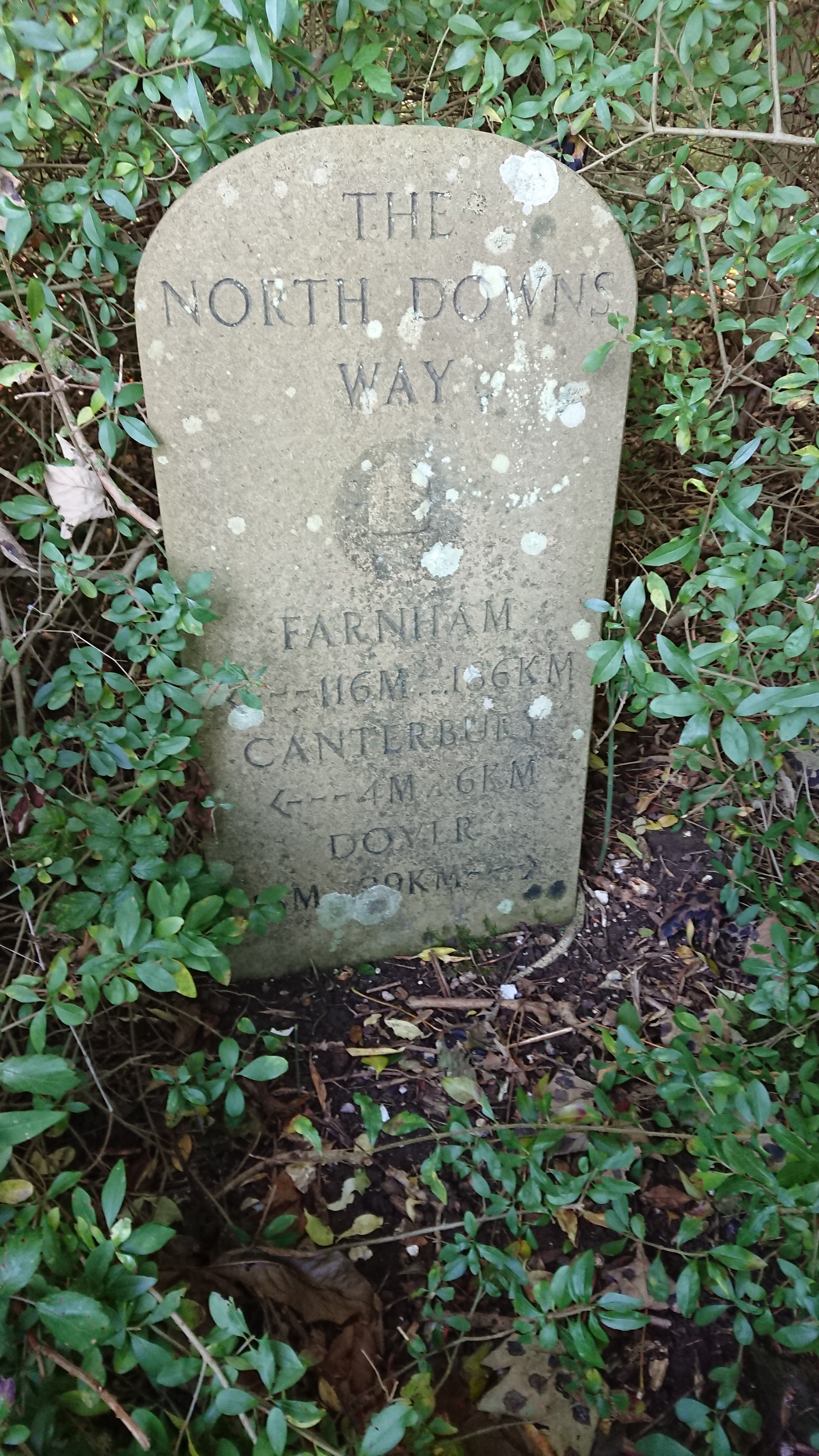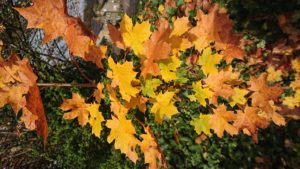To be honest the tide was in so we didn’t actually see the beach, but this was the second of our two days on the North Downs way. We started at Shepherdswell Station (there’s some confusion as to whether this village is two words or one).
The North Downs way is well signposted. In this section the route is often over arable fields, some of which had been recently ploughed, and occasionally through fields of livestock (once sheep, once young cattle). In wetter weather the ploughed fields would have been heavier going but the sunny dry weather of this week meant today’s walk was glorious.
 My favourite parts were the narrow leafy lanes and off road paths, some in line with a Roman Road. Its still quite green here and they’re full of hedgerow treasures: hips and haws and old man’s beard. A section through the parkland of Waldershare House was populated with many large older trees, including sweet chesnuts.
My favourite parts were the narrow leafy lanes and off road paths, some in line with a Roman Road. Its still quite green here and they’re full of hedgerow treasures: hips and haws and old man’s beard. A section through the parkland of Waldershare House was populated with many large older trees, including sweet chesnuts.
The former Chantry Chapel that was All Saints Church Waldershare, is now in the care of the Churches Conservation Trust.
 There was something of a detour to cross the A2. We had to walk up to a road bridge and back again as there was no footbridge across the dual carriageway in line with the Roman Road. It seems this was one of the things the Romans didn’t manage to do for us.
There was something of a detour to cross the A2. We had to walk up to a road bridge and back again as there was no footbridge across the dual carriageway in line with the Roman Road. It seems this was one of the things the Romans didn’t manage to do for us.
We were soon on our way down into Dover where we enjoyed an excellent plate of liver and bacon at the Whitecliff Café. This was followed by ice cream over looking the massive harbour between the Eastern and Western Docks.The white cliffs were behind us and the smooth blue sea ahead. It looked as if you could walk on it. From time to time a small poster popped up on the buildings along the seaboard. Reporting to be ‘conversations from Calais’ they contribute to keeping the migration dialogue alive.

From the remembered gospel
Jesus said to the waves: ‘Peace be still’.
We pray for those crossing the seas of the world.
JAL 31.10.2019 Shepherdswell to Dover on the North Downs Way.


 At Aylesham Cemetery we stopped for 11s. Therewas a sizeable group of Commonwealth War Graves in the cemetery, witness to the war in the air above Southern England in WW2.The second church was in the village of Womenswold where the Parish Church is dedicated to St Margaret of Antioch (the one in Turkey) who was a dragon slayer. The village is on the pilgrim route which extends from Canterbury to Rome and eventually Jerusalem.This section of the walk ended at Shepherdswell Station where we got the train back to Canterbury. We hope to do the section to Dover later in the week.
At Aylesham Cemetery we stopped for 11s. Therewas a sizeable group of Commonwealth War Graves in the cemetery, witness to the war in the air above Southern England in WW2.The second church was in the village of Womenswold where the Parish Church is dedicated to St Margaret of Antioch (the one in Turkey) who was a dragon slayer. The village is on the pilgrim route which extends from Canterbury to Rome and eventually Jerusalem.This section of the walk ended at Shepherdswell Station where we got the train back to Canterbury. We hope to do the section to Dover later in the week. From Psalm 5Lead me Lord, lead me into righteousness:Make your way straight ahead of me.JAL 28.10.2019 Canterbury YHA to Shepherds Well Station
From Psalm 5Lead me Lord, lead me into righteousness:Make your way straight ahead of me.JAL 28.10.2019 Canterbury YHA to Shepherds Well Station

 At Oxspring the current line and the disused line of the walk diverge. After a while we reached the Thurgoland tunnel about 300 yards long. We continued onto Wortley and a spot of ice cream for late 11s at a local farm. Just across a field and round the corner on the main road it was Pie Day at the Wortley Arms and it seemed churlish not to try any.
At Oxspring the current line and the disused line of the walk diverge. After a while we reached the Thurgoland tunnel about 300 yards long. We continued onto Wortley and a spot of ice cream for late 11s at a local farm. Just across a field and round the corner on the main road it was Pie Day at the Wortley Arms and it seemed churlish not to try any. It was a lovely walk and felt just like a day on LEJOG although it was of course Autumnal.
It was a lovely walk and felt just like a day on LEJOG although it was of course Autumnal.